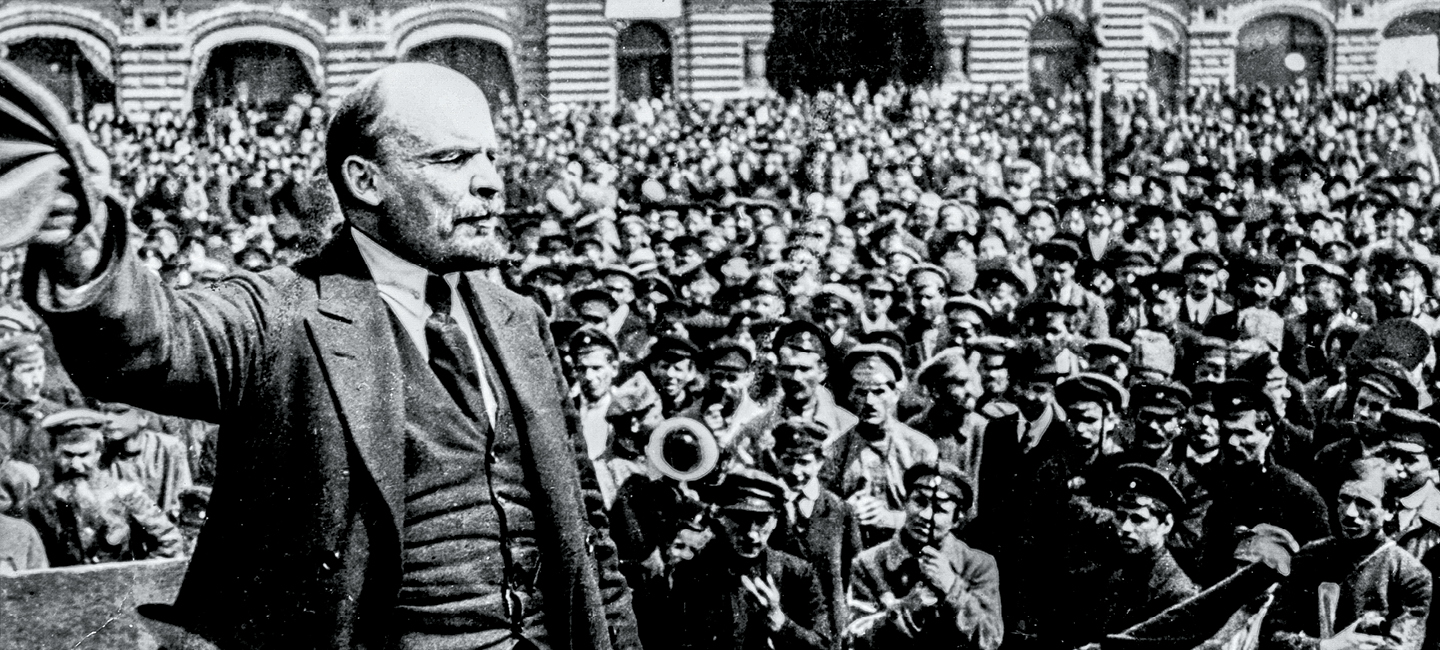It was a defining event of the 20th century.
One hundred years ago, in the fall of 1917, Communists known as Bolsheviks seized power in Russia, ending 1,100 years of imperial rule in the world’s largest nation.
Russia had long been run by despotic czars, and in the early 1900s, peasants began to revolt. When Russia’s economy, military, and government collapsed under the pressures of World War I (1914-18), Russia’s final czar, Nicholas II, was forced to abdicate his throne in March 1917. That created an opening for the charismatic Bolshevik leader Vladimir Lenin to seize power by November, soon establishing the Union of Soviet Socialist Republics, also known as the Soviet Union.
Within decades, Soviet rulers—including the infamous Joseph Stalin, who killed millions of Soviets as part of a political purge—transformed the country into a fearsome military power. It engaged the U.S. in a decades-long struggle for global dominance—a “Cold War” not just over territory, but also the very survival of Western democracy. For much of the 20th century, the Soviet threat loomed over every aspect of American life, from politics to technology to pop culture, until it collapsed in 1991.
“To try to understand the 20th century without the Russian Revolution is like one hand clapping,” says Lewis Siegelbaum, a Russia expert at Michigan State University.
With that in mind, here’s a look at seven ways the Russian Revolution changed the world.
It was a defining event of the 20th century.
One hundred years ago, in the fall of 1917, Communists known as Bolsheviks seized power in Russia. Their ascent to power ended 1,100 years of imperial rule in the world’s largest nation.
Russia had long been run by despotic czars, and in the early 1900s, peasants began to revolt. Russia’s economy, military, and government collapsed under the pressures of World War I (1914-18). This forced Russia’s final czar, Nicholas II, to give up his throne in March 1917. That created an opening for the charismatic Bolshevik leader Vladimir Lenin to take power by November. Shortly after, he established the Union of Soviet Socialist Republics, also known as the Soviet Union.
Within decades, Soviet rulers transformed the country into a fearsome military power. One of them, the infamous Joseph Stalin, killed millions of Soviets as part of a political purge. The Soviet Union went on to engage the U.S. in a decades-long struggle for global dominance. This conflict became known as the “Cold War.” Their fight was over more than territory; it was about the very survival of Western democracy. For much of the 20th century, the Soviet threat loomed over every aspect of American life. The Soviets affected everything from U.S. politics to technology to pop culture. Their impact came to an end when their government collapsed in 1991.
“To try to understand the 20th century without the Russian Revolution is like one hand clapping,” says Lewis Siegelbaum, a Russia expert at Michigan State University.
With that in mind, here’s a look at seven ways the Russian Revolution changed the world.

